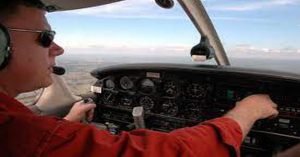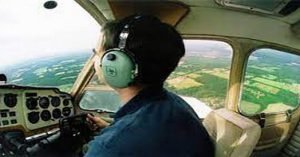Frequency Congestion

Frequency Congestion
Description
A single radio frequency is capable of handling a limited number of radio messages in a specified time. The maximum number of messages will be determined by the length of each message and its response.
Ideally, a pilot should be able to transmit a message at any time of his/her choosing and receive an immediate reply. As radio traffic increases above the ideal, the frequency becomes congested.
The pilot must wait for a break in transmissions to pass a message and may have to wait for a response from the ATCO, who has to judge different priorities.
Persistent (rather than transient) frequency congestion is a frequent contributory factor in communication breakdown, usually in association with other factors.
Effects
- The pilot or ATCO is unable to pass an important message at the desired time.
- A blocked transmission from another aircraft that is trying to communicate is lost or misheard.
- A pilot takes a message intended for another aircraft due to call sign confusion or expectation of clearance.
- Pilot workload and ATCO workload are increased due to the necessity to resolve the confusion.

Defenses
ATC attempt to reduce the impact of frequency congestion by Sectorisation and the use of multiple frequencies. However, too frequent a frequency change can also contribute to communication breakdown.
Typical Scenarios
- The pilot, who is awaiting a clearance, takes a clearance intended for another aircraft. The ATCO does not notice the error on reading back.
- The pilot takes a frequency change intended for another aircraft, resulting in a loss of communication.
- In his/her attempt to pass the message quickly, the ATCO does not use standard phraseology; this increases the chance of communication breakdown.
- The pilot transmits at the same time as another, who is conducting communications in the local language. This results in a blocked transmission.
- Radio Interference makes it difficult to read the call sign in a transmission, which is mistakenly taken by the wrong pilot.
Contributory Factors
- Call sign confusion;
- Loss of communication;
- Frequency change;
- Non-standard phraseology;
- Blocked transmission;
- Radio interference;
- Language.

Solutions
- Pilots:
- Always use standard phraseology;
- Listen in on the new frequency before transmitting;
- Call ‘blocked’ when you detect a blocked transmission;
- Use the English language, to assist other pilots to determine when communication with ATC is finished.
- Check that the PTT (Press to Transmit) switch releases freely at the end of each transmission and if any functional fault is identified, alternative transit options are used.
- ATCOs:
- Always use standard phraseology;
- Use short messages;
- Use the English language, to assist other pilots to determine when communication with ATC is finished.
- Do not talk continuously but allow pilots to check in on the frequency by building in rest blocks; In practical terms, it may be best to transfer several aircraft to their next sectors before checking in new aircraft – this is a matter of judgment for the ATCO.
- Reduce the number of aircraft on a frequency or extend the number of controllers, so that the workload per frequency is lower.
- Technology
- Blocked transmissions can be partly overcome by anti-blocking devices.
- Design a warning if the mike is pressed too long, for instance by a beep indicating the microphone is still transmitting. (Some aircraft already have such a feature).

Related Articles
- Pilot-Controller Communications (OGHFA BN)
Further Reading
- ALL CLEAR? Toolkit
HindSight Articles:
- HS2 Getting the Message Across;
- HS2 Analysis of an AIRPROX in Japan.
AGC Safety Letters:
- AGC Safety Letter December 2004;
- AGC Safety Letter August 2005;
- AGC Safety Letter April 2006;

EUROCONTROL Action Plan for Air-Ground Communications Safety, including:
- AGC Briefing Note 1 – General;
- AGC Briefing Note 2 – Call Sign Confusion;
- AGC Briefing Note 4 – Blocked Transmissions;
- AGC Briefing Note 5 – Radio Discipline.
Read more:
European Action Plan for Air-Ground Communications Safety
